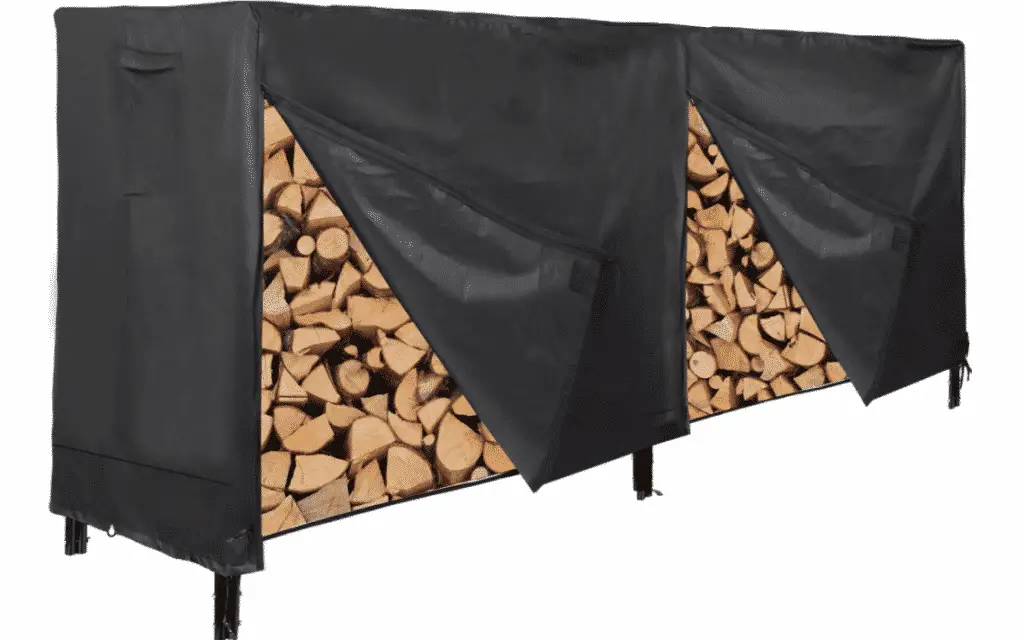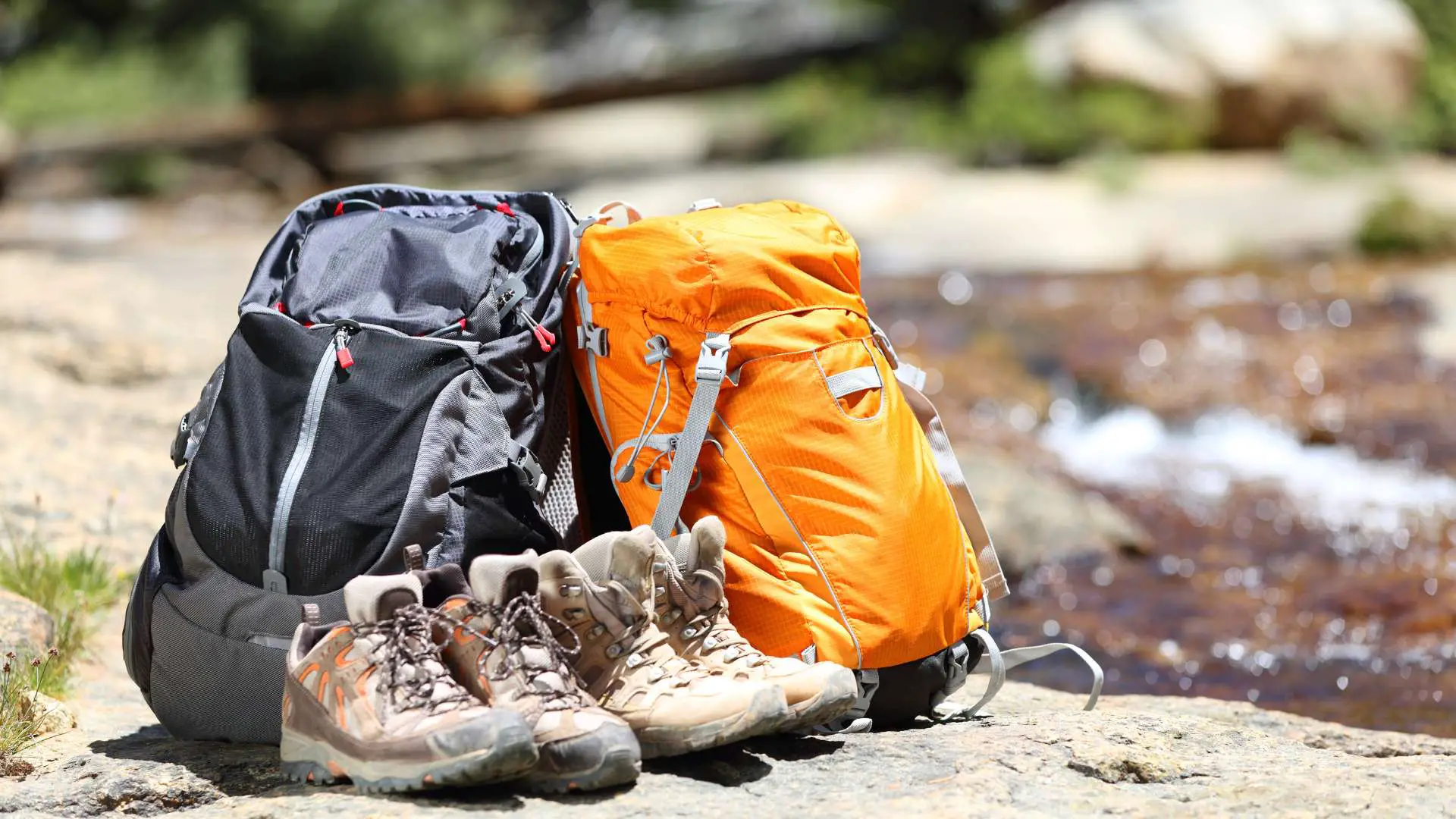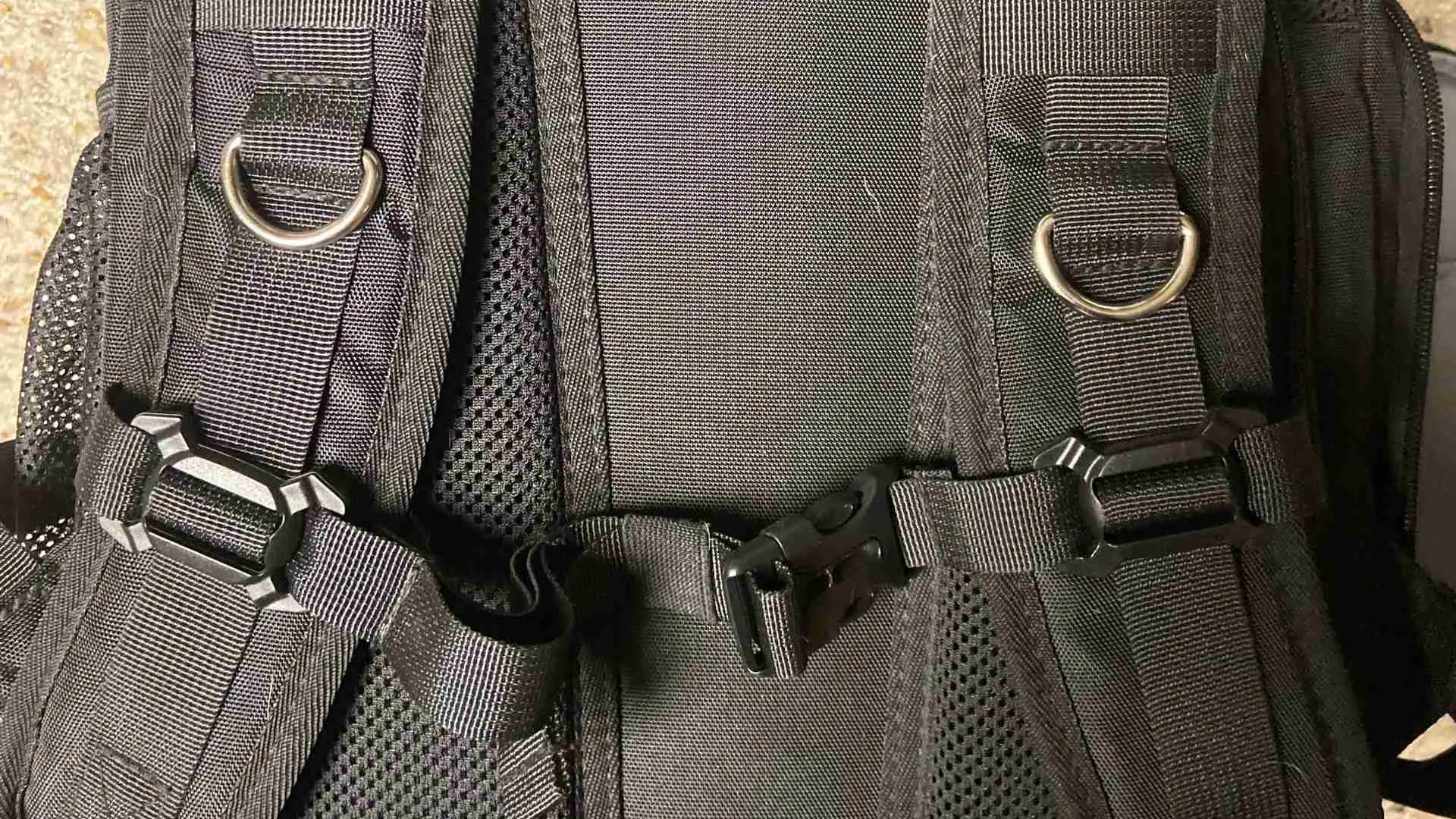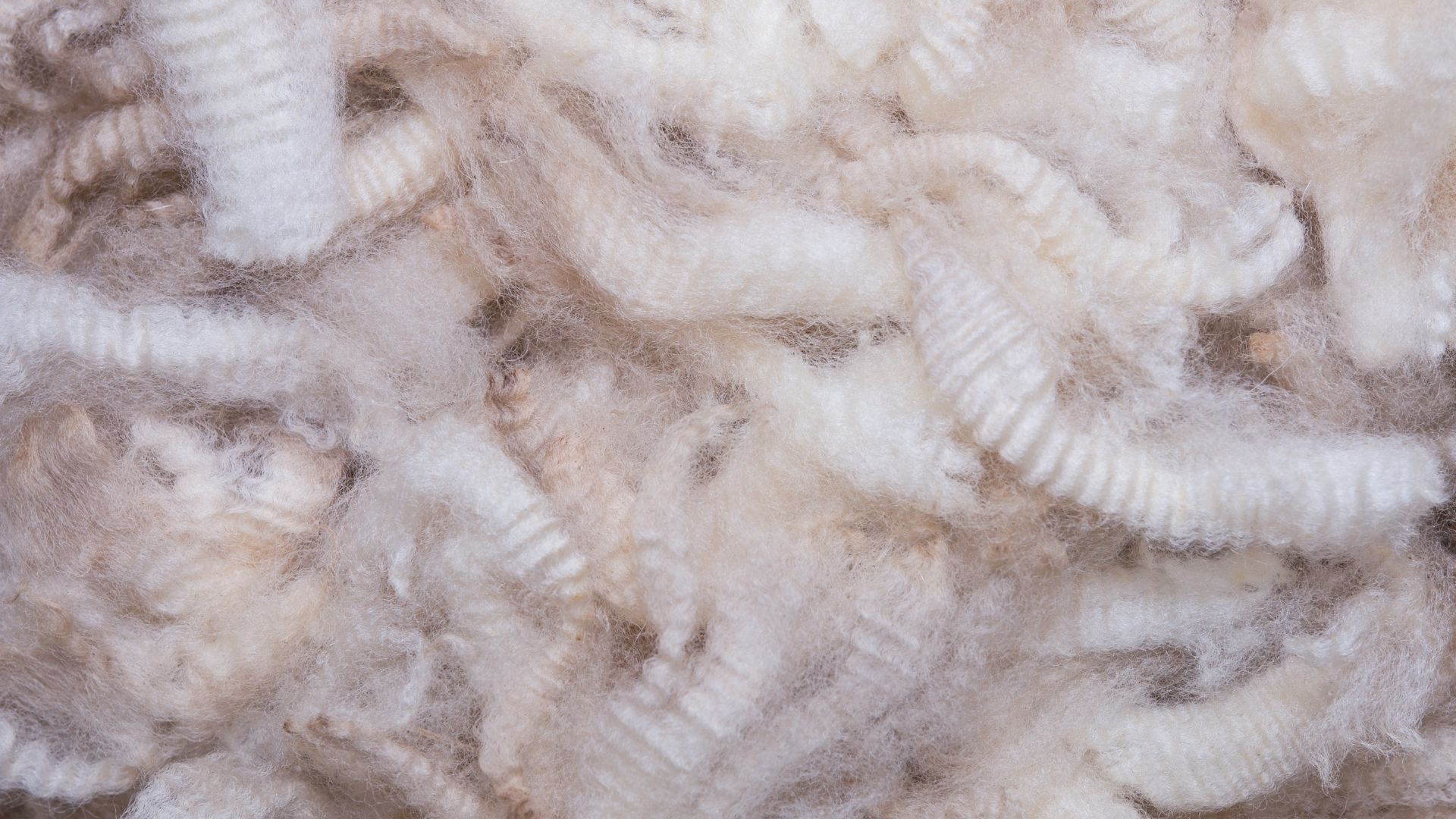So you’ve just cut down a tree, split it into small pieces and stacked up a nice sized pile of firewood. Burning green (recently cut wood) isn’t optimal, but do you really have to wait 6-12 months to let it season? Or can you burn freshly cut wood?
You can burn freshly cut wood, but it won’t be good experience. Wet unseasoned wood will be hard to light, smolder at low temperatures, and put off extra smoke. That doesn’t make for a good experience around a fire. I recommend waiting at least 6 months before you start burning the wood. You can always buy a truckload of dry firewood to get you through the seasoning process.
Unfortunately, you’ll have to wait a few months for fresh cut wood to properly burn. In the rest of this post I’ll explain a few ways to speed up the seasoning process and tell you an easy way to burn green firewood.
Why Shouldn’t I Burn Freshly Cut Wood?
Trying to burn fresh cut firewood is a humbling experience. It doesn’t matter how much kindling or gas you use to get the fire started. Green wood is extremely difficult to light and the fire still won’t be good even after it starts going. So why is freshly cut firewood so hard to light?
When you first cut down a tree the water content is through the roof. Over 35% (sometimes more) of a trees volume is taken up by its water content. It’s like trying to catch a dog bone on fire that has a 31% water content (actually harder). You need to give the firewood a few months to dry out and properly season before it will be ready to burn.
Firewood has to get down to the 10-15 percent range before it starts to optimally burn. Wet wood will just smolder without flames and give off loads of black smoke. That’s fine if you have a few dry pieces to throw in alongside it, but nobody wants to sit next to a flameless smoldering firepit.
I check my firewood with a cheap moisture meter that I picked up on Amazon. Buy the cheapest one that you can find since it doesn’t really matter as long as you’re close. You won’t be able to tell the difference between 13% and 15% moisture content anyway.
Is There An Easy Way to Light Fresh Cut Wood?

Unseasoned firewood doesn’t make a pretty fire, but it will give off some heat. I’ve tried just about every fire starting method imaginable and only one seems to work. I’m not talking about gasoline, diesel fuel, or any other traditional fire starter.
The only easy way to light green wood is to use a propane torch. Every other normal fire starter goes out before the wood will light. A propane torch will stay lit as long as there’s fuel left in the tank. So how do you use a torch to light up wet wood?
All you’re trying to do is burn off the excess water until the moisture level drops low enough to light the fire. Plan on holding the torch under the fire for 5-10 minutes for it to light. It’s actually really easy and fun to use since it’s basically a mini flamethrower. Just light up the torch, stick it next to the wood, and let her burn.
Don’t be afraid! A torch is way safer than gasoline and you’d have to be an idiot to cause serious damage. I actually use mine in my basement to light up my wood burner. Just keep the flame setting down low so it doesn’t blast out 5 feet and sound like a jet engine taking off.
I picked up a cheap torch at Harbor Freight for like $30, but I’ve been eyeing a Flame King Torch that comes with an ignitor(don’t need a lighter). It really doesn’t matter which one you choose since they all work on the same basic principle. Release propane into the air and it will light up with a spark.
It Will Produce Lots of Smoke
Remember that green wood will produce a lot of smoke. Green wood can’t get hot enough for the wood to fully combust so it puts off a black smoke cloud. It won’t be pleasant, but a little bit of smoke isn’t that bad around a campfire.
I wouldn’t recommend burning fresh wood in an indoor fireplace. All that black smoke could end up in your living room if the chimney isn’t properly vented. We had to repaint our entire living room a few years ago, because a bird decided to lay a nest at the top of our smoke stack clogging it up.
How Long Should You Wait to Burn Fresh Wood?
Generally speaking, if you cut a tree down in the spring it will be ready to burn once winter rolls around. It takes at least 6 months of summer sun to dry out your wood when it’s properly stacked and covered. Wood left out in the elements might start to rot and never completely dry. You’ll end up with fungus, mold, and lichens covering the wood.
It’s generally safe to burn lichens and traditional fungus, but it can be nasty. Lichens put off a weird musty smell that makes me sick. You’ll also end up with a bunch of spores in the air that can cause allergy problems.
How long it takes to season really depends on your climate and the time of year. If the wood is stacked, covered and properly ventilated it will take 1 full summer to season. You can’t count the fall/winter/spring months because the weathers cold and wet. There are a few ways to speed up the seasoning process that I’ll get into below.
For more information check out my post explaining how long it takes to season wood.
Speeding Up The Seasoning Process

After cutting and splitting your wood there are four things you need to do to speed up the seasoning process. The wood needs to be raised off the ground, covered, ventilated, and have lots of sunlight (optional). If you follow these directions your wood will be dry in no time.
- Raised Off The Ground: Your firewood should be on a rack a few inches off the ground. It doesn’t matter how you do it. Personally, I recommend building a firewood rack, but you can stack wood on pallets or pressure treated lumber. I started using firewood rack brackets (these ones) a few years ago. All you need is a few 2x4s and five minutes of your time to screw the rack together. It’s way more durable than every other commercial rack I’ve seen.
- Covered: Make sure the top of your firewood is covered (sides open) to keep off the snow and rain. You can cover firewood with a tarp, but there are a bunch of cheap covers on Amazon. I really like the REDCAMP cover that I picked up a few years ago. It was surprisingly cheap and way easier to use than a tarp. A well built wood shed will also work, but that will set you back $200-300.
- Airflow(Open Sides): Don’t trap in moisture by covering up the sides of your firewood rack. You want to make sure there’s lots of airflow so the wood will quickly dry.
- Lots of Sunlight: Sunlight is good! Heat from the sun will seriously speed up the drying process. Whether or not you can get lots of sunlight will depend on your property layout. I don’t know about you, but I didn’t choose my house based on whether or not I could dry firewood.
How to Tell if Wood Is Seasoned
As I mentioned above the easiest way to tell if wood is dry is by using a moisture meter. I picked up a Klein tools meter from Home Depot, but any cheap meter will work. The optimal burn range is 10-15 percent so it drops into that general range you’re good to get.
Try to burn your wood before it drops below 8%. Firewood can’t get too dry to burn, but it will burn ridiculously hot and fast. There are a few ways to tell if your wood is seasoned without a meter. The eyeball test won’t be as accurate, but it will give you a good idea.
- Wood Fades As It Dries: Fresh cut wood will start off with a greenish hue from and the color will slowly fade as it dries. Once the wood starts to look gray or brown it should be fine to burn.
- Bark Falls Off: Bark will start to fall off as part of the natural death and degradation process.
- Cracks Down The Side: Cracks will start to form along the sides of your firewood as it starts to dry out. The wood will contract as water slowly starts to evaporate and the density drops.
- Sound Changes: Smack 2 pieces of wood against each other. This is hard to describe, but properly seasoned wood will have a hollow sound.
- Lighter: Remember that 35% (sometimes more) of a freshly cut trees volume consists of water. A gallon of water weighs about 8.5 pounds. So as the firewood starts to dry and shed 1/3 of it’s volume it will get much lighter.
- Easy to Burn: Try to burn the firewood. Is the wood easy to light? Does it give off very little smoke? Then it’s dry enough to burn.



